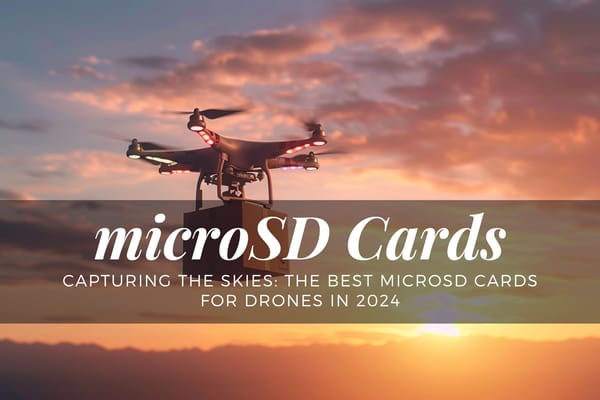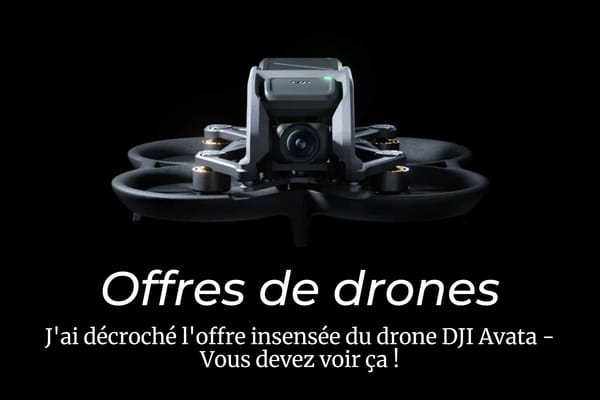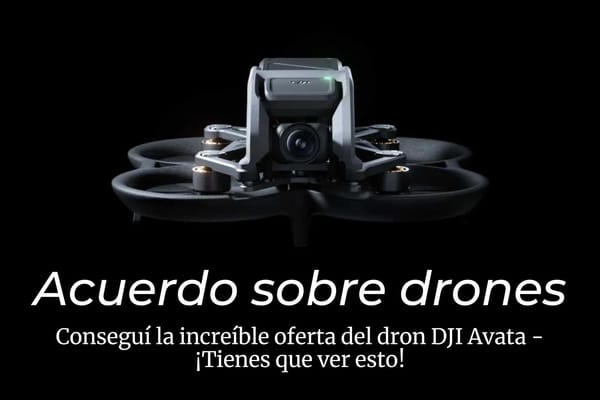DJI Has Announced a Sale for All of Its FPV Products to Help Consumers Cope With the Coronavirus

DJI’s goal is to help you fly confidently and safely. Even if the rules change, there will always be a way for responsible pilots to stay in the air.
In the face of recommendations and sometimes outright rules to stay home and keep the spread of the coronavirus down, many drone pilots have chosen to stay home.
Traveling for conferences, job, gathering footage or racing competitions are all options that might not be available to you.
FPV drone racing, or first person view, is a new phenomenon in the drone industry. It’s a new hobby that has gained popularity due to its exciting use of FPV Goggles and high-speed drone motor technology.
Drone Racing League founder and CEO Nicholas Horbaczewski, who began broadcasting its final season in China in late January and at the height of the coronavirus outbreak in China, said that the Chinese audience had reached around seven million - 70% more than in 2018. By mid-March, DRL's tryout series had attracted 300,000 viewers, a jump of 10% from the week before.
In addition to the professionals, drone racing is also on the rise among high school-age children. Last weekend, a drone racing simulator was used instead of holding the Youth Drone Sports Championships at their real-life high school.
The announced sale on DJI FPV drone gear covers products for both new and experienced drone users.
The DJI FPV sale ends on April 15, 2020.
What is DJI FPV?
The DJI FPV system gives you an immersive experience in flying by including FPV goggles, an FPV Air Unit Transmission Module, an FPV remote controller and an FPV camera.
When you pair the video from the headset screen with the video from the camera, you get a smooth, clear HD video stream of ultra-low end-to-end latency — exactly what you need for FPV flight and drone racing.
DJI first entered the FPV niche back in 2017 with DJI Goggles. With 6 hours of battery life, DJI Goggles make controlling your drone flight simple. Just wear them to start flying, and head movements control the gimbal, while you can control the aircraft’s position using the controller. Because video is received directly from the drone rather than through the controller, it's less delayed.
After the success of DJI Goggles, DJI went on to build an all-in-one, ready to fly setup that combines the Goggles with a new ecosystem of FPV products.
The aforementioned digital ecosystem consists of FPV goggles, an FPV Air Unit Transmission Module, an FPV remote controller and an FPV camera.
What do you use FPV for?
FPV is generally used in drone racing and drone freestyle.
You can use these skills, it’s true, in FPV racing. But they will also come in handy in other situations. If you consider yourself a FPV pilot, you should also develop your skills for other special purposes.
The DJI FPV system and devices are used by many, including:
- Search and rescue: Search and rescue just got faster. Drones fly and search for victims, while dedicated cameras focus on live video of the ground
- Agriculture: Using a dedicated FPV feed with a second camera allows for operations like capturing NDVI data or mapping images, or collecting data
What drones are compatible with DJI FPV units?
While you can build your own setup, building it for cheap will likely prove to be more work than you asked for.
DJI has built-in support for the FPV system, and if a drone is compatible with it, you can fly:
- DJI Mavic 2 Pro
- DJI Mavic 2 Zoom
- DJI Mavic Air
- DJI Spark
- DJI Tello
- DJI Inspire 2
If you’re looking for an excellent drone that won’t break the bank, I recommend taking a look at this guide I made. It details great drones for less than $100!


